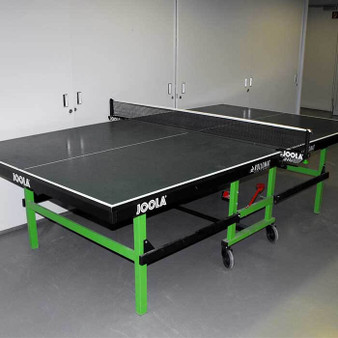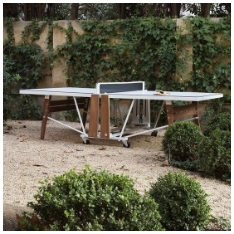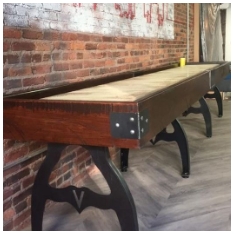Ping pong, also known as table tennis, is a fast-paced and accessible game that combines coordination, strategy, and quick reflexes. If you're a beginner looking to get started, understanding the step-by-step process can help you feel more confident and improve your game over time.
Play ping pong step by step for beginners, covering essential rules, basic techniques, and practice routines to help you develop a strong foundation.
Understanding the Basics of Ping Pong
The Equipment You Need
To begin, you’ll need some essential equipment:
- Ping pong paddle: Also known as a racket or bat, it typically has a wooden blade covered with rubber on both sides.
- Ping pong balls: Standard balls are 40 mm in diameter and weigh 2.7 grams.
- Table: A regulation ping pong table is 9 feet long, 5 feet wide, and 30 inches high, with a 6-inch net dividing the two halves.
Make sure your equipment is in good condition, especially the paddle's rubber, which affects control and spin.
Basic Game Rules
Ping pong can be played as singles (1 vs. 1) or doubles (2 vs. 2). Here are the fundamental rules:
- A match is usually played to 11 points.
- Players must win by at least 2 points.
- Each player serves twice in a row, then the serve switches.
- The serve must bounce once on each side of the table.
- The ball must remain visible behind the table before the serve.
Understanding these rules is essential as you learn how to play ping pong step by step for beginners.

Step-by-Step Guide to Playing Ping Pong
Step 1 – Learn the Correct Grip
There are two common grips:
- Shakehand grip: Similar to shaking someone’s hand. This is the most common and beginner-friendly grip.
- Penhold grip: The paddle is held like a pen, often used in Asian playing styles.
Start with the shakehand grip as it provides a balance between control and power.
Step 2 – Master the Ready Position
Stand with feet shoulder-width apart, knees slightly bent. Hold the paddle in front of you with your free hand ready to toss the ball. Keep your body relaxed but alert. This stance allows quick movements in any direction.
Step 3 – Practice Basic Strokes
There are four primary strokes you should learn:
- Forehand drive: Swing the paddle forward from the side of your body.
- Backhand drive: Swing across the body using the back of the paddle.
- Forehand push: A gentle shot that keeps the ball low with minimal spin.
- Backhand push: Similar to the forehand push but from the opposite side.
Use slow and controlled movements at first. Once you feel comfortable, increase speed and spin.
Step 4 – Learn to Serve
A legal serve starts with the ball resting on your open palm. Toss it at least 6 inches in the air and strike it so it bounces once on your side and once on your opponent’s side. Try both forehand and backhand serves to find what feels natural.
Step 5 – Focus on Footwork
Good footwork helps you reach the ball quickly and maintain balance:
- Move side-to-side rather than stretching.
- Keep your weight on the balls of your feet.
- Practice shuffling movements rather than crossing your legs.
Better positioning leads to more consistent and accurate shots.
Developing Your Game
Step 6 – Return Serves Effectively
Returning serves can be challenging because of spin. Watch your opponent’s paddle motion closely:
- If the paddle brushes under the ball, expect backspin.
- If it brushes the top, expect topspin.
- Angle your paddle accordingly to counteract the spin.
Practice returning different types of serves with a partner or coach.
Step 7 – Rally with Purpose
Begin rallying by exchanging basic strokes. Focus on keeping the ball on the table rather than hitting hard:
- Aim for consistent placement rather than power.
- Try to control the pace of the rally.
- Learn to recover quickly after each shot.
This step improves your rhythm, timing, and control.
Step 8 – Keep Score and Play Games
Start playing short games to apply what you've practiced. Remember to:
- Alternate serves every 2 points.
- Keep track of score honestly.
- Reflect on your strengths and areas for improvement after each game.
Frequent games help reinforce muscle memory and build confidence.
Practice Tips for Beginners
- Use a wall or robot: If a partner isn’t available, practice strokes against a wall or with a ball machine.
- Watch professional matches: Observe techniques, strategies, and footwork from experienced players.
- Record yourself: Video your sessions to identify mistakes in form or timing.
- Focus on consistency: It's better to make 10 controlled shots than 1 fast one and 9 misses.
- Take breaks and stretch: Table tennis can be demanding; rest helps prevent injury and improves performance.
Common Mistakes to Avoid
- Gripping too tightly: A tight grip reduces flexibility and makes spin control difficult.
- Standing too close to the table: This limits your ability to respond to deep shots.
- Overhitting: Focus on control before adding power.
- Ignoring footwork: Staying flat-footed leads to missed opportunities and poor balance.
Being aware of these mistakes is an important part of learning how to play ping pong step by step for beginners.
Conclusion
Starting your journey in ping pong doesn’t require advanced skill or expensive gear—just patience, practice, and a willingness to learn. By following these steps and avoiding common mistakes, you can quickly grasp the fundamentals and enjoy the sport confidently.
This guide on how to play ping pong step by step for beginners is designed to help you build a solid base. As you improve, you can explore advanced techniques, different play styles, and even competitive matches. The key is consistent practice and enjoying each step of the process.





